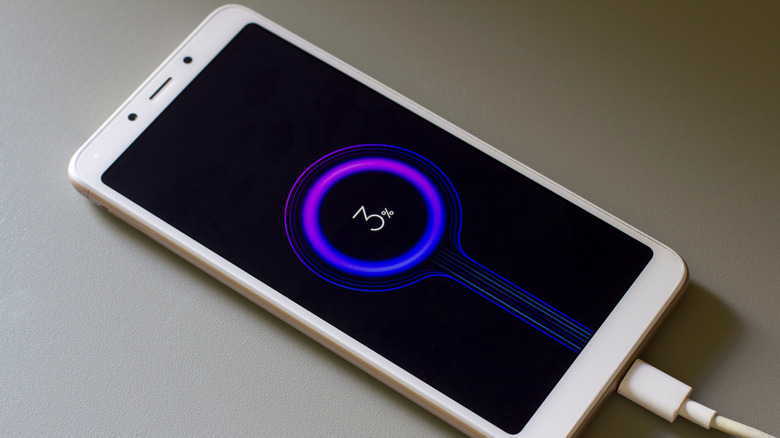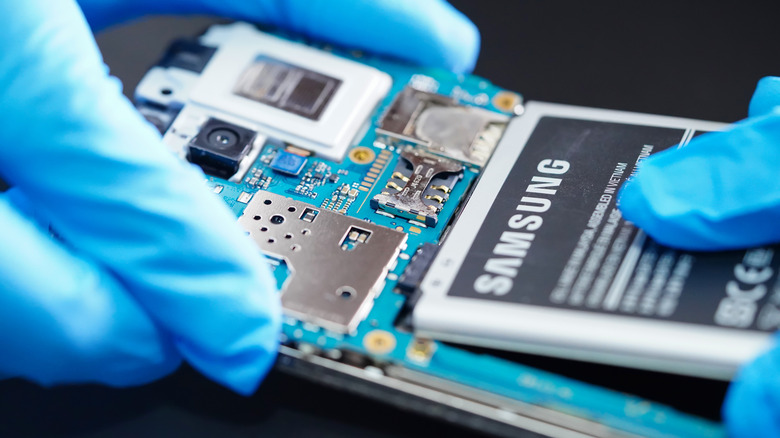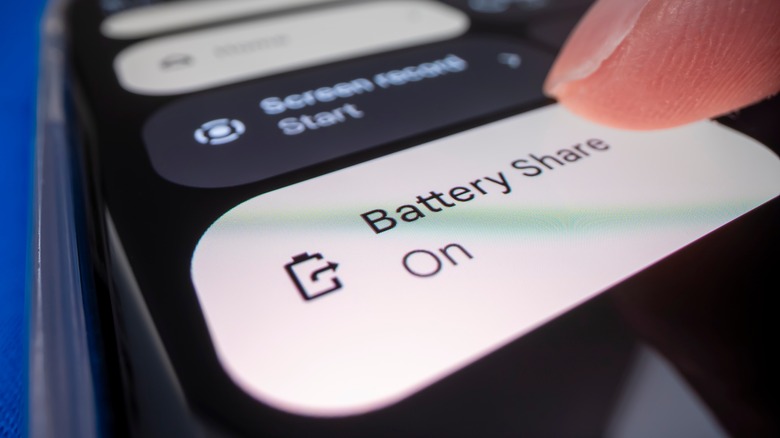What To Do If Your Android's Battery Is Going Down While Charging
You settle into your favorite spot, plug in your Android device, and expect it to fuel up. But you find that the battery percentage is on a mysterious downward spiral instead of gaining power. (It could be the result of an app, which is why we recommend uninstalling these ones on Android.) This issue can be more than just a mere inconvenience — it may leave you disconnected at crucial times, unable to contact others, use essential apps, or even miss out on important updates.
For a world that's highly connected and reliant on technology, this could pose significant challenges. It can be incredibly frustrating when you're getting ready for a long day, and your smartphone, a device you largely depend on for work and school, is not equipped with enough power to support you throughout. However, rest assured — you're not alone.
Many Android users have encountered this unusual problem. While there may be some quick troubleshooting steps you can take, such as buying a new charger, you might need a new battery. (Or if you have an old phone, it might be time to pick a new one with great battery life.)
Why your Android is losing battery while charging
The issue of your Android losing battery while charging can be perplexing. It's normal to expect your device to power up when plugged in. However, several potential culprits could be behind this anomaly. One of the most common is a deteriorating battery. Over time, batteries shed their ability to hold a charge. This natural degradation might become so severe that your device drains faster than it can be recharged.
Another probable cause is using a charger that is incompatible with your device. A charger with an inappropriate voltage or current output might need to deliver more power to charge your device effectively.
Software glitches could also be at play. Power-hungry apps or system bugs sometimes cause excessive battery consumption, which may override the charging process. Lastly, environmental conditions, such as extremely hot or cold temperatures, can impact battery performance and charging efficiency. Understanding these potential causes is the first step in addressing the draining-while-charging issue.
How to troubleshoot and resolve your Android's charging issue
To determine what's happening, you should examine your charging system: the charging cord and the battery. However, it would be best if you double-checked you're using the correct charger before trying to replace the battery. Following this advice can save you both time and money.
Identifying the correct charger for your device is crucial. Always use a charger from your phone's manufacturer or a reliable third party with good reviews — these are the best Android chargers. The charger's specifications should match those stated in your device's manual. Fast chargers can be helpful, but they must be compatible with your phone's charging capability.
If your phone has a removable battery, replace it if getting a new charger doesn't help.
- Power off your device to avoid any short-circuit risks.
- Carefully remove the back cover of your Android phone, if applicable.
- Locate the battery and gently disconnect it from its housing.
- Replace it with a new battery specifically designed for your device model. Make sure the battery is adequately secured.
- Reattach your phone's back cover and power to check if the problem persists.
Note that for some Android models, the battery is non-removable, and professional assistance may be required for replacement.
How to extend your Android's battery lifespan and avoid future charging problems
Now that you're knowledgeable about troubleshooting your Android charging problem, it's time to focus on preventive strategies to prolong your device's battery lifespan and ward off future charging issues.
Start by adjusting your device's settings. Lower your screen brightness, reduce unnecessary notifications, and limit background data usage. These steps can significantly reduce battery strain. Use the power-saving mode in your settings when you're not actively using your phone.
Next, pay attention to your charging habits. Allow your phone to nearly discharge before recharging, but avoid letting it reach zero percent. While convenient, you shouldn't charge your phone overnight because it can lead to overcharging. Remember, shorter, frequent top-ups are better than one long charge from a completely drained state.
Keeping your phone's software updated is also critical. Updates often contain bug fixes that improve battery management. Similarly, updating your apps can prevent them from consuming more power than necessary.
Lastly, avoid exposing your phone to extreme temperatures. Cold weather, in particular, can damage your battery and decrease its lifespan.



